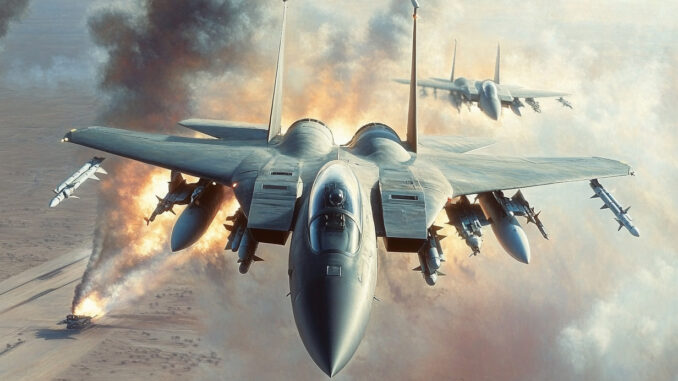
Here is a technical overview of the fighter jets used during the Gulf War, their specific missions, and the results achieved.
Context of the Gulf War
The Gulf War, triggered in 1990 after Iraq’s invasion of Kuwait, was a major conflict involving a coalition of international forces under the United Nations’ aegis. The main objective of this coalition was to expel Iraqi forces from Kuwait and restore the country’s territorial integrity. This conflict is particularly notable for the scale of the air campaign, which played a decisive role in neutralizing Iraqi military capabilities. The coalition’s air superiority was crucial to the war’s outcome, allowing them to strike key infrastructure, reduce the mobility of Iraqi troops, and protect allied ground forces. Fighter jets, with their ability to conduct air superiority, interdiction, and ground support missions, were at the heart of this strategy, demonstrating the importance of air control in modern conflicts.
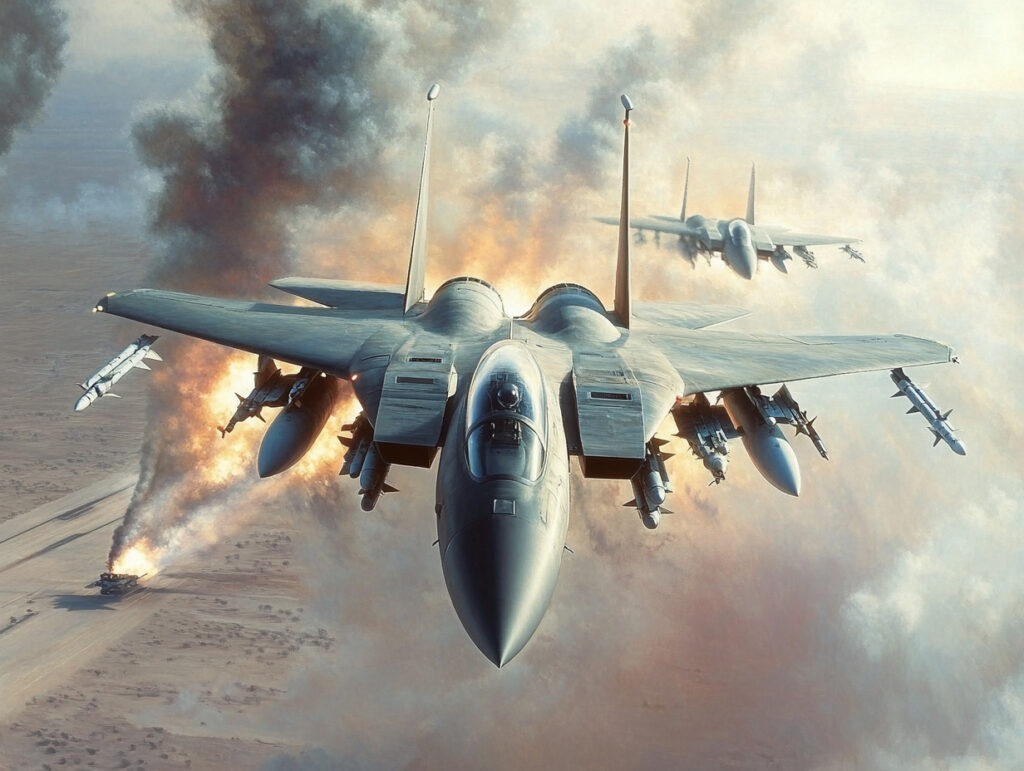
United States
F-15 Eagle
- Technical Overview: The F-15 Eagle is an all-weather, twin-engine fighter designed for air superiority. It is equipped with powerful radars (AN/APG-63) with a range of 160 km and can reach a maximum speed of Mach 2.5.
- Missions during the Gulf War: The F-15 was primarily used for air superiority missions, intercepting and shooting down Iraqi fighters.
- Results: The F-15C achieved 32 of the coalition’s 41 aerial victories, often using the AIM-7 Sparrow missile.
F-16 Fighting Falcon
- Technical Overview: The F-16 is a multi-role fighter, agile and equipped with an excellent thrust-to-weight ratio, capable of high-performance maneuvers. It can reach speeds of Mach 2 and carry a wide range of munitions.
- Missions during the Gulf War: The F-16 was primarily used for ground strikes and missions to suppress enemy air defenses.
- Results: The F-16 carried out a large number of sorties, significantly contributing to the destruction of Iraqi military infrastructure.
F/A-18 Hornet
- Technical Overview: The F/A-18 is a versatile carrier-based fighter capable of air-to-air and air-to-ground missions. It is equipped with modern weapon systems and can reach Mach 1.8.
- Missions during the Gulf War: The Hornet was used for precision strikes on strategic targets and to ensure air superiority.
- Results: A notable result was the destruction of an Iraqi MiG-25 during an air combat.
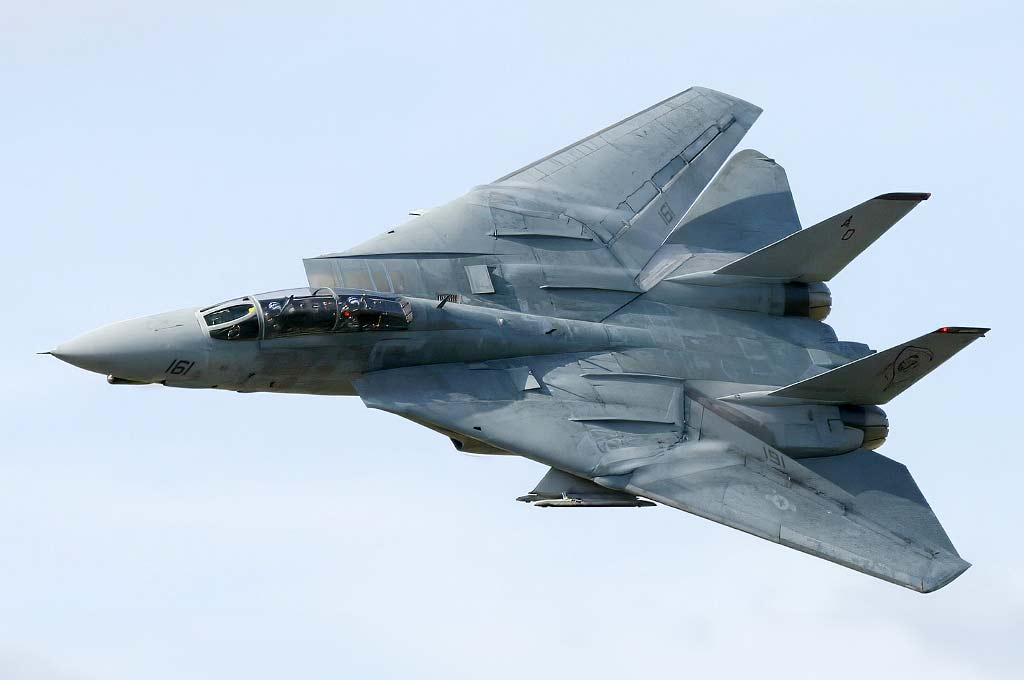
F-14 Tomcat
- Technical Overview: The F-14 is an all-weather interceptor, equipped with advanced detection capabilities with its AWG-9 radar and long-range AIM-54 Phoenix missiles.
- Missions during the Gulf War: Primarily deployed for air cover and long-range interception missions.
- Results: The F-14 was crucial in protecting naval forces, although it was less involved in direct engagements compared to the F-15.
A-10 Thunderbolt II
- Technical Overview: The A-10 is a ground-attack aircraft designed for close air support, equipped with a GAU-8/A Avenger 30mm rotary cannon.
- Missions during the Gulf War: The A-10 was used to destroy Iraqi armored vehicles and provide support to ground forces.
- Results: The A-10 destroyed over 900 Iraqi tanks and many other armored vehicles, playing a crucial role in the destruction of Iraqi ground forces.
F-117 Nighthawk
- Technical Overview: The F-117 is a stealth aircraft designed for precision bombing missions with a reduced radar signature.
- Missions during the Gulf War: The F-117 was used for precise strikes against high-value strategic targets.
- Results: The F-117 was responsible for eliminating several critical targets, contributing to the paralysis of Iraqi command capabilities in the early hours of the war.
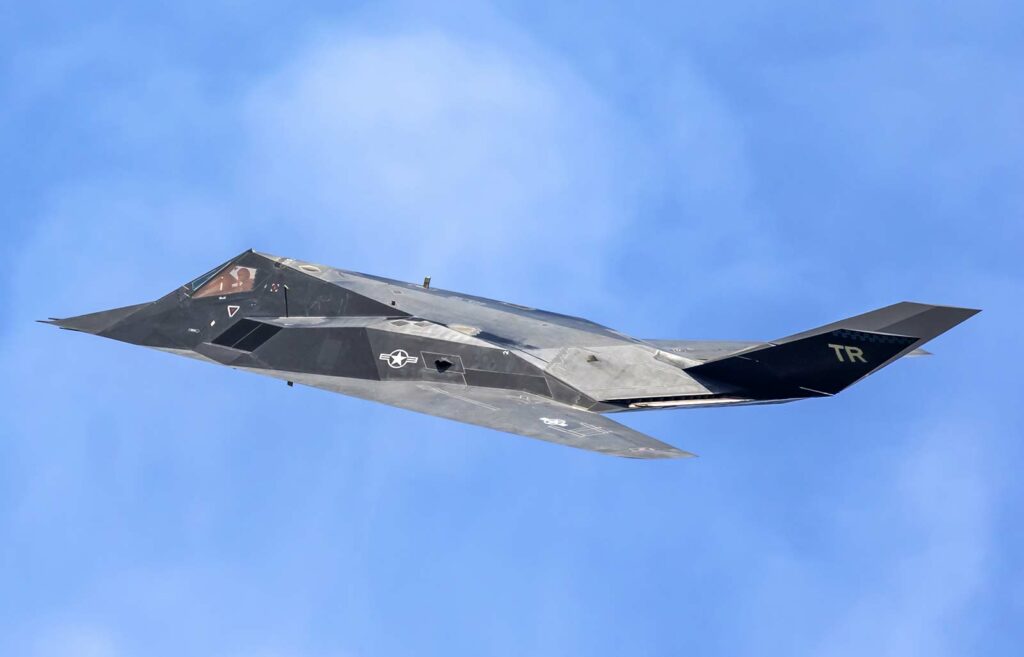
United Kingdom
Panavia Tornado GR1
- Technical Overview: The Tornado GR1 is an interdiction strike aircraft designed for low-altitude, high-speed strikes with deep penetration capability.
- Missions during the Gulf War: The Tornado was used to attack Iraqi airfields and defensive positions.
- Results: The Tornado performed low-altitude strikes with great precision, although it suffered losses due to Iraqi anti-aircraft defenses.
SEPECAT Jaguar
- Technical Overview: The Jaguar is a twin-engine ground attack aircraft with low-altitude strike capability.
- Missions during the Gulf War: It was primarily used for interdiction and close air support missions.
- Results: The Jaguar successfully completed several ground target destruction missions, despite the challenges posed by anti-aircraft defenses.
Blackburn Buccaneer
- Technical Overview: The Buccaneer is a low-altitude bomber capable of carrying laser-guided bombs.
- Missions during the Gulf War: Used to designate targets for other aircraft, notably the Tornado.
- Results: The Buccaneer greatly enhanced the effectiveness of allied strikes by enabling precision strikes on strategic targets, thereby reducing collateral damage.
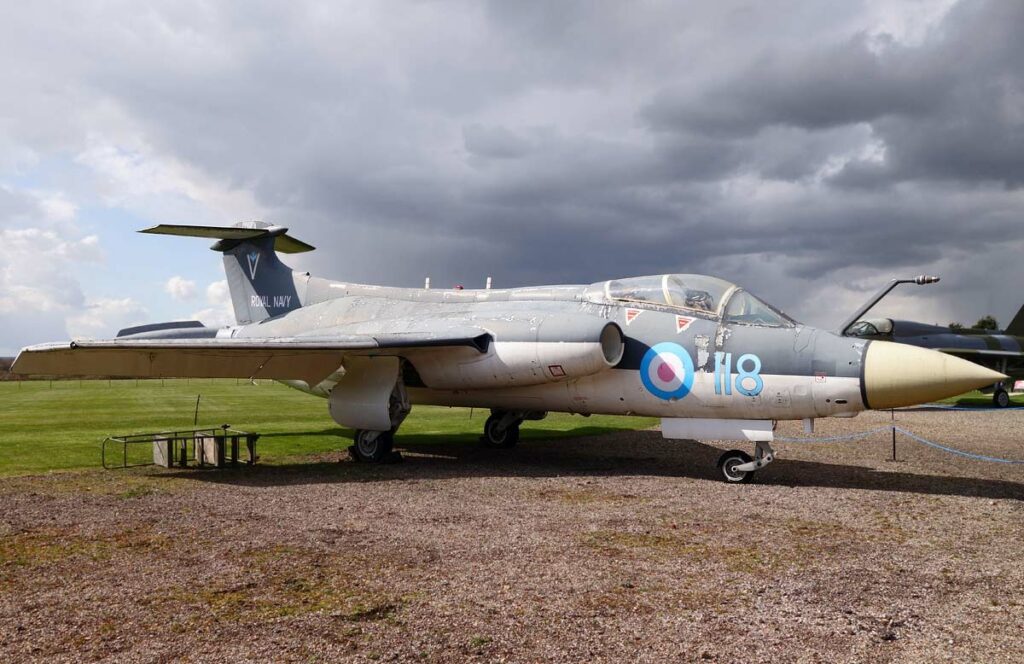
France
Mirage 2000
- Technical Overview: The Mirage 2000 is a single-engine, multi-role fighter with air-to-air and air-to-ground capabilities, with a maximum speed of Mach 2.2.
- Missions during the Gulf War: Primarily used for interdiction and air support missions.
- Results: The Mirage 2000 contributed to maintaining air superiority in the conflict zone while participating in precision strikes.
Mirage F1
- Technical Overview: The Mirage F1 is a multi-role fighter with strike and interception capabilities.
- Missions during the Gulf War: Used for reconnaissance and interdiction missions.
- Results: The Mirage F1 was engaged in air combat but suffered losses against the more modern coalition aircraft.
SEPECAT Jaguar
- Technical Overview: The SEPECAT Jaguar is a ground attack aircraft developed in collaboration between France and the United Kingdom. It is capable of low-altitude interdiction and close air support missions.
- Missions during the Gulf War: French Jaguars were primarily used for interdiction and close support missions, targeting Iraqi troop concentrations and logistical infrastructure.
- Results: The Jaguars carried out many successful sorties, contributing to the disorganization of Iraqi forces by destroying their supply lines and defensive positions.
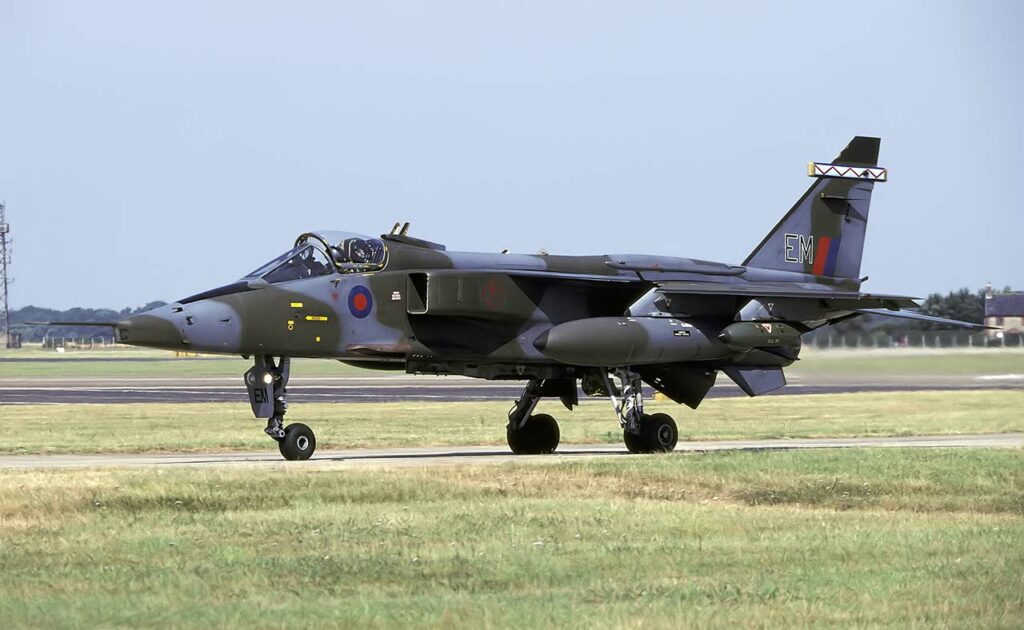
Canada
CF-18 Hornet
- Technical Overview: The CF-18 Hornet is a modified version of the F/A-18 for the Canadian Forces, incorporating specific equipment for Canada’s operational conditions. It retains the versatility of the Hornet, capable of conducting air-to-air and air-to-ground missions.
- Missions during the Gulf War: Canadian CF-18s were primarily used for combat air patrol and ground strike missions.
- Results: The CF-18 contributed to securing the coalition’s airspace while conducting strikes on Iraqi targets, demonstrating their versatility and effectiveness in a high-intensity combat environment.
Italy
Tornado IDS
- Technical Overview: The Tornado IDS (Interdictor/Strike) is an attack aircraft designed for low-altitude, high-speed penetration missions. It is equipped with advanced avionics and can carry a wide range of armaments, including guided bombs and anti-radar missiles.
- Missions during the Gulf War: Italian Tornado IDS aircraft were engaged in strike missions on strategic targets in Iraq, including airfields and communication installations.
- Results: Italian Tornados contributed significantly to the bombing campaign, despite the high risk posed by Iraqi air defenses. Several missions were successful, although some aircraft were damaged or lost in combat.
Saudi Arabia
F-15 Eagle
- Technical Overview: Similar to the American F-15s, the Saudi F-15s are air superiority fighters capable of operating at high speeds with great maneuverability.
- Missions during the Gulf War: Saudi F-15s were primarily used to defend Saudi airspace and participate in air superiority patrols.
- Results: Saudi F-15s played a crucial role in defending coalition airspace, contributing to the neutralization of Iraqi air forces without suffering significant losses.
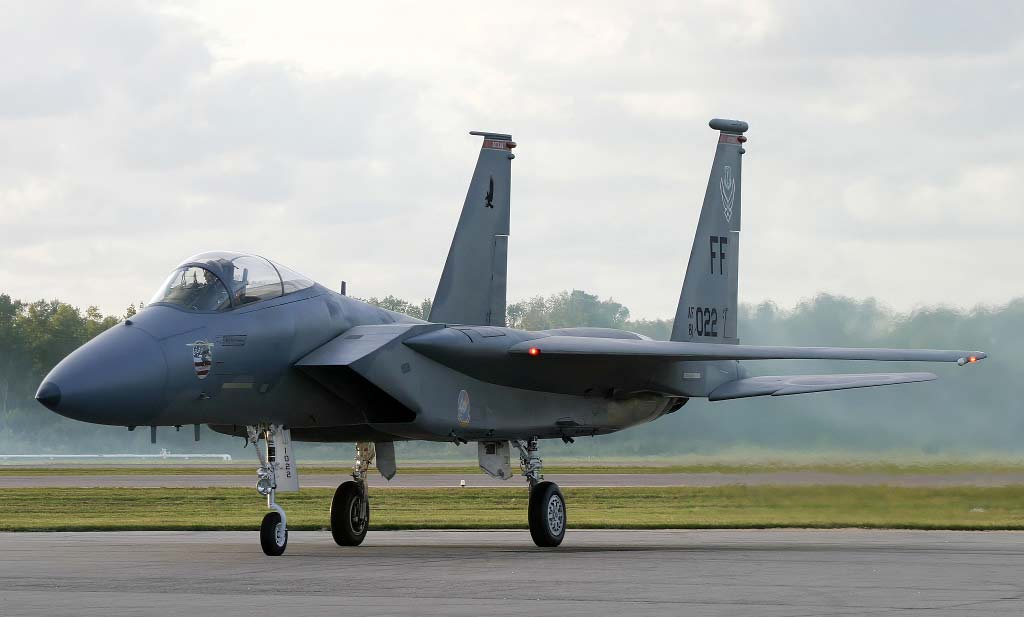
Tornado ADV and IDS
- Technical Overview: The Tornado ADV (Air Defence Variant) is a version specialized for air interception, while the Tornado IDS is designed for ground strike missions.
- Missions during the Gulf War: The Tornado ADV was used for air defense missions, while the IDS participated in strategic strikes.
- Results: The Saudi Tornados were effective in their respective roles, contributing to the protection of coalition forces and the destruction of Iraqi infrastructure.
Iraq
Mirage F1
- Technical Overview: The Mirage F1 is a French multi-role fighter capable of air defense, interdiction, and reconnaissance missions. It is less technologically advanced than the coalition fighters but remains a robust and versatile aircraft.
- Missions during the Gulf War: Iraqi Mirage F1s were used for air defense and interdiction missions.
- Results: Despite some initial successes, the Iraqi Mirage F1s were quickly outclassed by the more modern coalition fighters, suffering heavy losses against American F-15s and F-16s.
MiG-29
- Technical Overview: The MiG-29 Fulcrum is a highly maneuverable Soviet-designed fighter jet optimized for short-range engagements. It is equipped with advanced aerodynamics that enable it to perform tight maneuvers and engage in high angles of attack. The MiG-29 is armed with air-to-air missiles, including the short-range R-73 (AA-11 Archer) with a helmet-mounted sighting system, allowing the pilot to target an enemy aircraft by simply looking at it. Despite its agility, the MiG-29 is limited by its relatively short range and less advanced avionics compared to Western aircraft of the time.
- Missions during the Gulf War: MiG-29s were deployed by the Iraqi Air Force primarily for air defense missions, tasked with intercepting coalition aircraft and protecting Iraqi airspace.
- Results: The MiG-29s faced significant challenges during the Gulf War, particularly when confronted by the more advanced radar and missile systems of coalition aircraft, such as the F-15 and F-16. Several MiG-29s were shot down during the conflict, demonstrating their limitations against better-equipped adversaries. The MiG-29’s outdated electronics and lack of advanced pilot displays made it difficult for Iraqi pilots to compete effectively in the highly contested airspace.
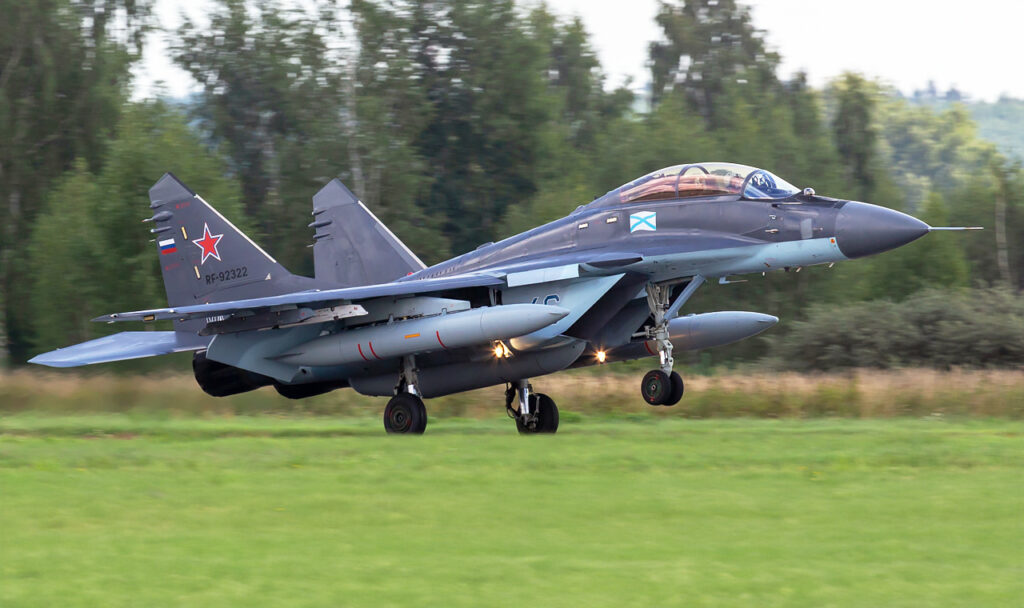
MiG-25
- Technical Overview: The MiG-25 Foxbat is a Soviet high-altitude interceptor and reconnaissance aircraft capable of reaching speeds over Mach 3. It was designed primarily to intercept and destroy high-speed aircraft at altitudes beyond the reach of many fighters.
- Missions during the Gulf War: Iraqi MiG-25s were primarily used for high-altitude reconnaissance and interception missions. Their speed made them challenging targets, and they were among the few aircraft that could operate at such high altitudes.
- Results: Despite its impressive speed, the MiG-25 was outclassed by the more modern fighters of the coalition. Several MiG-25s were engaged and shot down by F-15 Eagles, demonstrating that speed alone was not enough to survive in the face of advanced radar-guided missile technology.
Su-25
- Technical Overview: The Su-25 Frogfoot is a heavily armored ground-attack aircraft designed for close air support. It is equipped with a variety of weapons, including a 30mm cannon and rockets, bombs, and missiles, making it effective against ground targets such as tanks and fortifications.
- Missions during the Gulf War: The Su-25s in the Iraqi Air Force were deployed to provide close air support to ground forces, aiming to slow the advance of coalition troops by targeting armored vehicles and other ground targets.
- Results: The Su-25 faced significant challenges from coalition air superiority and air defenses. Many Su-25s were lost to coalition aircraft and anti-aircraft fire, limiting their overall effectiveness in the conflict.
In conclusion, the diverse array of fighter jets deployed by both the coalition and Iraqi forces during the Gulf War highlights the critical role of air power in modern military conflicts. While the coalition’s technologically superior aircraft played a decisive role in achieving air dominance, the Iraqi Air Force’s aircraft, though robust in design, were often outmatched by the advanced capabilities of their adversaries.
War Wings Daily is an independant magazine.